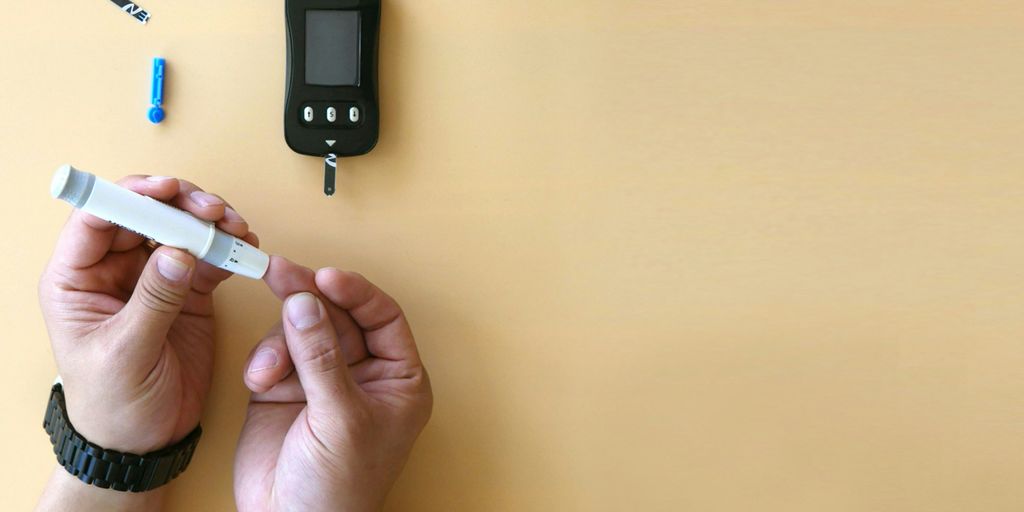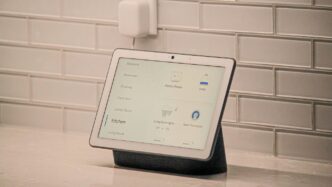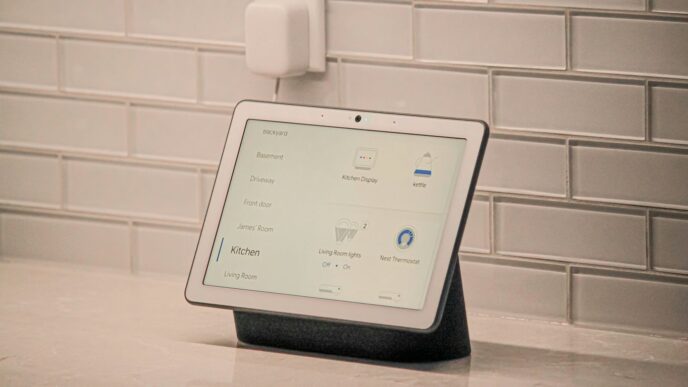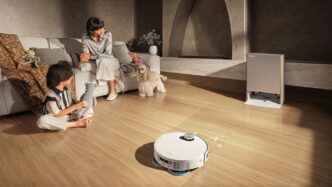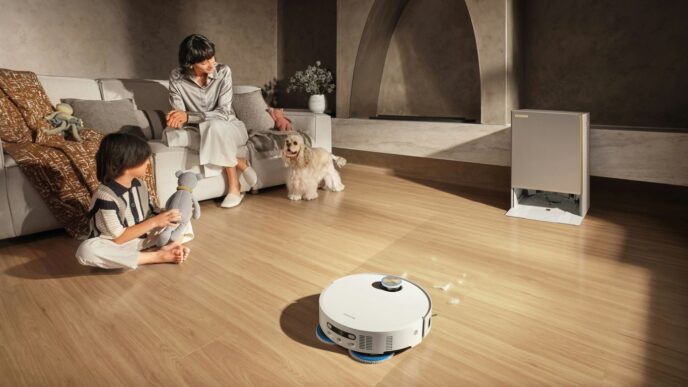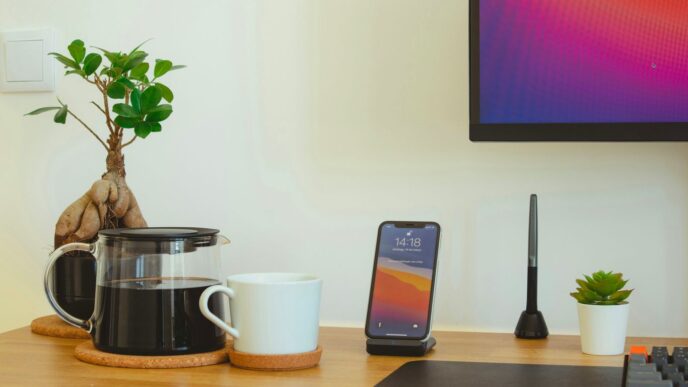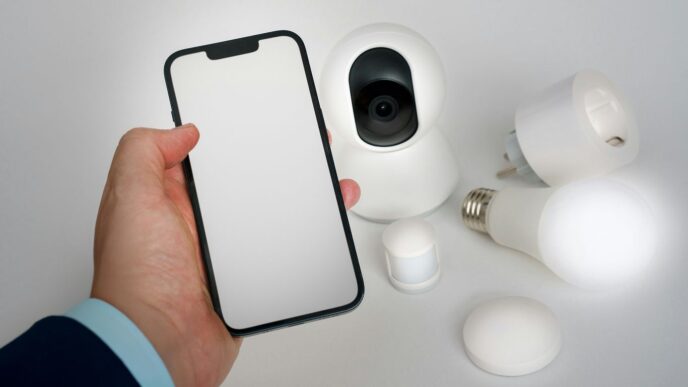You know how it is with those smart speakers and plugs you buy online. They work okay, most of the time, but you’re always kind of stuck in their system. Your personal data is on some server somewhere, and if a company decides to stop supporting a device, you’re just out of luck. That’s why a lot of people are getting into building their own open source smart home. It might sound like a big technical project, but it’s really getting more straightforward. This guide is here to walk you through how to get it done in 2025. You’ll be in charge of everything, and it’s a pretty fun thing to set up yourself.
Key Takeaways
- An open source smart home keeps your private information on your own hardware, not on a company’s cloud.
- You can get started with a cheap computer like a Raspberry Pi or choose hardware made specifically for this, like Home Assistant Green.
- Learning about how devices talk to each other through things like Zigbee, Z-Wave, and the new Matter standard is important.
- The best part is making your own automations, like having the coffee pot turn on when your morning alarm goes off.
- Remember to back up your system regularly, and if you run into problems, there are big online communities full of people who can help.
Foundations Of The Modern Open Source Smart Home
Why Local Control And Privacy Are Paramount
Okay, so you’re thinking about making your home "smart." Cool! But before you dive in headfirst, let’s talk about something super important: keeping things local and private. Why? Because when your smart devices are phoning home to some company’s server all the time, you’re basically handing over a ton of data about your life. What time you turn on the lights, when you’re home, what temperature you like… it all adds up. Local control means your devices talk to each other without needing the internet, and that keeps your data where it belongs: with you. It’s like having a conversation in your house versus shouting it out in public. Plus, if the internet goes down, your lights still work! Think about that. You can use an open source platform to achieve this.
Comparing Key Platforms: Home Assistant, OpenHAB, And More
So, you want to build an open source smart home? Great! Now you need to pick a platform. Think of these platforms as the brains of your operation. There are a few big names out there, and they each have their own strengths. Home Assistant is super popular because it’s really user-friendly and has tons of integrations. OpenHAB is another solid choice, especially if you’re into more advanced customization. It’s a bit more complex to set up, but it’s incredibly powerful. There are other options too, like Mozilla IoT (though it’s less actively developed now) and some smaller projects. The best way to decide is to try a few out and see which one clicks with you. Consider the following:
- Ease of Use: How comfortable are you with tech stuff?
- Compatibility: Does it work with the devices you already have (or plan to buy)?
- Community Support: Is there a good online community to help you when you get stuck?
Understanding The Role Of Hubs, Protocols, And Integrations
Alright, let’s break down some jargon. A "hub" is basically the central point of your smart home network. It’s what all your devices connect to. Think of it as the translator between all your different gadgets. "Protocols" are the languages these devices use to talk to each other. Zigbee, Z-Wave, Wi-Fi, and Bluetooth are common ones. "Integrations" are how you connect different services and devices to your hub. For example, an integration might let you control your Philips Hue lights through Home Assistant. The hub uses DIY open-source smart home protocols to communicate with the devices. It’s like teaching everyone to speak the same language so they can all work together. The more integrations a platform has, the more flexible it is. You want a hub that supports a wide range of protocols and has lots of integrations available. This gives you the freedom to choose the best devices for your needs, without being locked into a single ecosystem.
Selecting The Right Hardware For Your Central Hub
Okay, so you’re ready to pick the brains of your smart home – the central hub. This is where all the magic happens, where your devices talk to each other, and where you set up those cool automations. But with so many options, how do you choose? Let’s break it down.
Getting Started With A Raspberry Pi Setup
The Raspberry Pi is a classic choice for a reason. It’s cheap, versatile, and there’s a huge community built around it. It’s a great way to get your feet wet without breaking the bank. You can install Home Assistant or OpenHAB on a Pi and start experimenting. The downside? It requires a bit of technical know-how. You’ll need to flash an operating system, install the smart home software, and configure everything yourself. But hey, that’s part of the fun, right? Plus, you can use the Pi for other projects later on if you decide to upgrade your hub. You can find a lot of tutorials online to help you get started with Raspberry Pi setup.
Exploring Dedicated Hardware Like Home Assistant Green
Want something a little more plug-and-play? Home Assistant Green is designed to be super easy to set up. It comes with Home Assistant pre-installed, so you can skip the whole operating system and software installation process. Just plug it in, connect it to your network, and you’re good to go. It’s a bit more expensive than a Raspberry Pi, but the convenience might be worth it, especially if you’re not comfortable with command lines and configurations. It’s a solid choice for beginners who want a hassle-free experience. It’s worth noting that many devices require a hub, so keep that in mind when budgeting.
Leveraging Existing Servers And Virtual Machines
Already have a server or a powerful desktop computer running 24/7? You can use it as your smart home hub! Running Home Assistant in a virtual machine (VM) is a great way to consolidate your hardware and save some money. It also gives you more flexibility in terms of resources and backups. The downside is that you’ll need some experience with virtualization software like Proxmox or VirtualBox. But if you’re already familiar with these tools, it’s a fantastic option. Plus, you can allocate more processing power and memory to your smart home setup as needed. Just make sure your server has enough resources to handle the load. I personally recommend using Home Assistant, an open source smart home hub system.
Mastering Essential Communication Protocols
Getting your devices to talk to each other is a big part of building a smart home. It’s not always as simple as connecting to Wi-Fi. Different devices use different languages, or protocols, to communicate. Understanding these protocols is key to a smooth and reliable smart home experience. Let’s explore some of the most important ones.
A Deep Dive Into Zigbee, Z-Wave, And Thread
Zigbee and Z-Wave have been around for a while, and they’re both designed for low-power communication in smart homes. They create a mesh network, meaning devices can talk to each other, extending the range of your network. This is different from Wi-Fi, where devices usually talk directly to your router. Thread is a newer protocol that’s also designed for low-power mesh networking, and it’s based on open standards, which is a plus.
Here’s a quick comparison:
| Feature | Zigbee | Z-Wave | Thread |
|---|---|---|---|
| Frequency | 2.4 GHz | 908.42 MHz (US) | 2.4 GHz |
| Mesh Network | Yes | Yes | Yes |
| Power | Low | Low | Low |
| Interoperability | Can be complex, profiles vary | Good, requires Z-Wave certification | Good, based on open standards |
| Range | Up to 100 meters (open air) | Up to 100 meters (open air) | Up to 30 meters (indoor) |
| Use Cases | Lighting, sensors, smart plugs | Lighting, locks, thermostats | Lighting, thermostats, security systems |
How The Matter Standard Is Unifying Smart Devices
Matter is a new communication standard that’s trying to solve the problem of fragmentation in the smart home world. It’s backed by major players like Apple, Google, Amazon, and Samsung, and it’s designed to make it easier for devices from different manufacturers to work together. The goal is simple: buy a device, and it should just work, regardless of the brand. Matter uses Thread technology as one of its underlying protocols, but it can also run over Wi-Fi and Ethernet. It’s still early days for Matter, but it has the potential to be a game-changer.
Integrating Wi-Fi Devices Without Relying On The Cloud
Many smart devices use Wi-Fi to connect to your network, but some of them rely on the cloud to function. This means your data is being sent to a remote server, and if your internet connection goes down, your devices might stop working. Luckily, there are ways to integrate Wi-Fi devices without relying on the cloud. Here are a few options:
- Local Control: Some devices offer a local control option, allowing you to control them directly from your smart home hub without going through the cloud.
- Open Source Firmware: You can flash some devices with open source firmware like Tasmota or ESPHome, which gives you complete control over the device and eliminates the need for cloud connectivity.
- MQTT: MQTT is a lightweight messaging protocol that’s often used in IoT applications. You can use MQTT to communicate with your Wi-Fi devices locally, without relying on the cloud.
It might take a bit of extra work to set up, but it’s worth it for the added privacy and reliability. Plus, you’ll be less dependent on the manufacturer’s servers, which can sometimes be unreliable or even shut down.
Integrating Your First Wave Of Smart Devices

Okay, you’ve got your hub set up, you’ve wrestled with the software, and you’re starting to feel like you’re actually building a smart home. Now comes the fun part: connecting actual devices! It can be tempting to go all-out and buy everything at once, but I suggest starting small. Get a feel for how things work before you automate your entire life. I still remember the excitement of unboxing my first "smart home starter" kit.
Essential Smart Lighting And Climate Control Solutions
Let’s be real, lighting is usually the first thing people think about. Smart bulbs are easy to install and can make a big difference. But don’t stop there! Think about smart switches too. They’re great for controlling regular lights and can be more reliable than bulbs. For climate, start with a smart thermostat. It can save you money on your energy bill and make your home more comfortable.
Here’s a simple comparison of lighting options:
| Feature | Smart Bulbs | Smart Switches |
|---|---|---|
| Installation | Super easy, just screw them in. | Requires a bit of wiring knowledge. |
| Functionality | Color changing, dimming, scheduling. | On/off control, dimming (if supported). |
| Best For | Lamps, accent lighting. | Overhead lights, controlling multiple lights. |
| Potential Issues | Can be unreliable if the switch is turned off. | Requires neutral wire in some cases. |
For climate control, consider these options:
- Smart Thermostats: Control your heating and cooling remotely, set schedules, and save energy.
- Smart Vents: Control airflow to individual rooms for more precise temperature management.
- Smart Fans: Integrate with your smart home system for automated cooling.
Enhancing Home Security With Sensors And Locks
Security is a big reason why many people get into smart homes. Adding some sensors and a smart lock can give you peace of mind. Door/window sensors are cheap and easy to install. Motion sensors can detect intruders. And a smart lock lets you control who enters your home, even when you’re not there. You can even use your Home Assistant step-by-step tutorial to integrate sensors and home appliances.
Here are some security devices to consider:
- Door/Window Sensors: Detect when doors or windows are opened or closed.
- Motion Sensors: Detect movement inside or outside your home.
- Smart Locks: Allow you to lock and unlock your doors remotely, create temporary access codes, and receive notifications when someone enters or exits.
Choosing The Best Smart Plugs And Energy Monitors
Smart plugs are incredibly versatile. You can use them to control almost anything that plugs into an outlet. Lamps, fans, coffee makers – you name it. Energy monitors can help you track your energy usage and identify ways to save money. They’re a great way to see how much energy your devices are actually using. If you are just starting to prepare for smart homes, try to use devices that support Matter connection.
Here’s why smart plugs are great:
- Remote Control: Turn devices on or off from anywhere.
- Scheduling: Set schedules for devices to turn on or off automatically.
- Energy Monitoring: Track energy usage and identify energy vampires.
And here’s how energy monitors can help:
- Identify Energy Hogs: See which devices are using the most energy.
- Reduce Energy Waste: Unplug devices that are not in use.
- Save Money: Lower your energy bill by reducing energy consumption.
Creating Powerful Automations And Custom Scenes
Time to make your smart home actually smart. It’s not just about turning lights on with your phone; it’s about creating a home that anticipates your needs and reacts accordingly. We’re talking about automations and scenes that make your life easier, safer, and maybe even a little bit cooler. Let’s get into it.
Building Your First Automation From Scratch
Okay, so you’ve got some smart devices. Now what? Let’s build an automation. Think of it as a recipe: if this happens, then that should happen. For example, "If the sun sets, then turn on the living room lights." Simple, right? Here’s how you might approach it:
- Identify a Need: What’s a task you do regularly that could be automated? Maybe it’s adjusting the thermostat when you leave for work, or turning on a fan when a certain temperature is reached.
- Choose Your Trigger: What event will start the automation? This could be a time of day, a sensor reading (like motion or temperature), or even a button press.
- Define Your Action: What should happen when the trigger occurs? This could be turning on a light, sending a notification, or adjusting a device setting.
- Test and Refine: Automations rarely work perfectly the first time. Test your automation and tweak the trigger and action until it works exactly how you want it to. For example, you can use ESPHome to create custom sensors for unique triggers.
Designing Intuitive Dashboards For Easy Control
Having a bunch of automations is great, but sometimes you just want to manually control things. That’s where dashboards come in. A good dashboard is like the control panel of your smart home. It should be easy to understand and use, even for guests. Here are some tips:
- Prioritize Key Controls: Put the things you use most often front and center. For example, frequently used lights or temperature settings.
- Use Visual Cues: Use icons and colors to make it easy to identify different devices and functions. A lightbulb icon for lights, a thermostat icon for temperature, etc.
- Keep It Simple: Don’t overcrowd your dashboard. A clean, uncluttered design is easier to navigate. Consider using multiple dashboards for different rooms or functions.
Using Scripts And Blueprints To Simplify Complex Tasks
Want to take your automations to the next level? That’s where scripts and blueprints come in. Scripts are sequences of actions that can be triggered manually or as part of an automation. Blueprints are like templates for automations, allowing you to easily create complex automations without having to start from scratch every time. Think of it like this:
- Scripts: A pre-defined set of actions. For example, a "Goodnight" script that turns off all the lights, locks the doors, and sets the alarm.
- Blueprints: A template for an automation. For example, a blueprint for a motion-activated light that you can easily adapt for different rooms and sensors. This is where you can build reusable actions and templates to save time.
Using scripts and blueprints can save you a ton of time and effort, especially when dealing with complex automations. They also make it easier to share your automations with others and benefit from the work of the community.
Future-Proofing And Maintaining Your Smart Home Ecosystem
Let’s be real, setting up your open source smart home is only half the battle. Keeping it running smoothly and making sure it doesn’t become obsolete in a year or two is just as important. This section covers how to keep your system up-to-date, troubleshoot common problems, and find help when you need it.
Best Practices For System Backups And Updates
Backups are your best friend. Seriously. Imagine spending hours setting up your automations, only to have your Raspberry Pi die and lose everything. Regular backups can save you a ton of headache. Here’s what I do:
- Automated Backups: I use a script that automatically backs up my Home Assistant configuration to a network drive every week. You can find tons of these scripts online, or write your own if you’re feeling ambitious.
- Full System Images: Every few months, I create a full image of my Raspberry Pi’s SD card. This is a lifesaver if something goes seriously wrong and you need to restore your entire system.
- Offsite Backup: Consider backing up your configuration to a cloud service or an external hard drive stored somewhere other than your house. This protects you against data loss from fire, theft, or other disasters.
Updates are also important, but proceed with caution. I usually wait a few days after a new release to see if anyone reports any major issues before updating. Read the release notes carefully to understand what’s changed and if there are any breaking changes that might affect your setup. Keeping your smart home automation software current is important for security and new features.
Troubleshooting Common Connectivity And Device Issues
Things will inevitably go wrong. A device will become unresponsive, an automation will stop working, or your hub will crash. Here are some common issues and how to fix them:
- Device Unreachable: First, check the obvious things: Is the device plugged in? Is the battery dead? If that’s not the problem, try restarting the device or your hub. Sometimes, a simple reboot is all it takes.
- Zigbee/Z-Wave Issues: If you’re having trouble with Zigbee or Z-Wave devices, try repairing the network. This will re-establish the connections between your devices and your hub. Also, make sure you have enough repeaters in your network to provide good coverage.
- Wi-Fi Problems: Wi-Fi can be a pain. Make sure your devices are connected to the correct network and that the signal strength is good. If you’re having persistent problems, consider using a dedicated Wi-Fi network for your smart home devices.
- Automation Failures: Double-check your automation triggers and conditions. Make sure they’re still valid and that the devices involved are working correctly. Look at the logs to see if there are any error messages.
Tapping Into Community Resources For Support And Inspiration
You’re not alone! There’s a huge community of open source smart home enthusiasts out there who are always willing to help. Here are some great resources:
- Home Assistant Community Forums: The Home Assistant forums are a goldmine of information. You can find answers to almost any question you can think of, and there are plenty of helpful people willing to lend a hand.
- OpenHAB Community Forums: Similar to the Home Assistant forums, the OpenHAB community is very active and supportive.
- Reddit: There are several subreddits dedicated to smart homes, home automation, and specific open source platforms. These are great places to ask questions, share your projects, and get inspiration.
- GitHub: Many open source smart home projects are hosted on GitHub. You can find code, documentation, and issue trackers there. If you’re feeling ambitious, you can even contribute to the projects yourself.
Wrapping It All Up
So, that’s pretty much it. Getting into the open-source smart home world can feel like a big project at first. And to be honest, there will be moments you want to pull your hair out. But hopefully, this guide showed you that it’s not some impossible task reserved for tech wizards. The whole point is that you get to be in charge—your data stays with you, and you can connect devices from all sorts of brands without being locked into one system. It’s a hobby that grows over time. You don’t have to automate your entire house this weekend. Just start with one or two things, like some smart plugs or a motion sensor. Before you know it, you’ll have a home that works for you, and you’ll have the satisfaction of knowing you built it yourself.
Frequently Asked Questions
Why should I use an open source system instead of just buying products from Google or Amazon?
Think of it like this: with systems from big companies, your commands and data travel over the internet to their servers. An open source system, like Home Assistant, keeps all that information right inside your own house. This means your smart home keeps working even if your internet connection drops. It’s also much more private because you control your own data. You get to decide what devices to use without being stuck with just one brand.
Do I need to be a computer expert to set up a smart home hub?
Not at all! While using a tiny computer like a Raspberry Pi might sound complicated, there are many step-by-step guides made just for beginners. It’s become a very popular project. If you want an even simpler option, you can buy a dedicated device like Home Assistant Green. It’s designed to be plug-and-play, so you can get started without any complex setup.
What’s the difference between Zigbee, Z-Wave, and Wi-Fi?
Zigbee and Z-Wave are special communication methods built just for smart devices. They use very little energy, which is why a battery in a small sensor can last for years. They also create their own reliable network, so they don’t slow down your Wi-Fi. While many devices use Wi-Fi, these other options are often better for building a fast and stable smart home.
Will the new Matter standard make my current smart devices useless?
No, Matter is designed to help your devices work together more easily. Think of it as a universal language that all smart home gadgets can understand. It won’t make your old devices obsolete. In fact, many existing smart products can be updated to work with Matter, making it simpler to connect everything in the future, no matter who made it.
What can I actually do with automations?
Automations are way more than just turning things on and off. You can create custom scenes that control multiple devices at once. For instance, a ‘Good Morning’ automation could slowly brighten your lights, start the coffee maker, and tell you the weather. You can also set up security alerts, like getting a message on your phone if a window is opened when you’re not home. It’s all about making your home work for you.
What’s the easiest way for a complete beginner to get started?
The best way to begin is by starting small so you don’t get overwhelmed. First, choose your main control system, like Home Assistant. Then, buy just one or two simple devices, like a smart plug or a couple of smart light bulbs. This lets you learn the basics of connecting a device and creating your first simple automation. Once you’re comfortable, you can slowly add more gadgets to your system.


